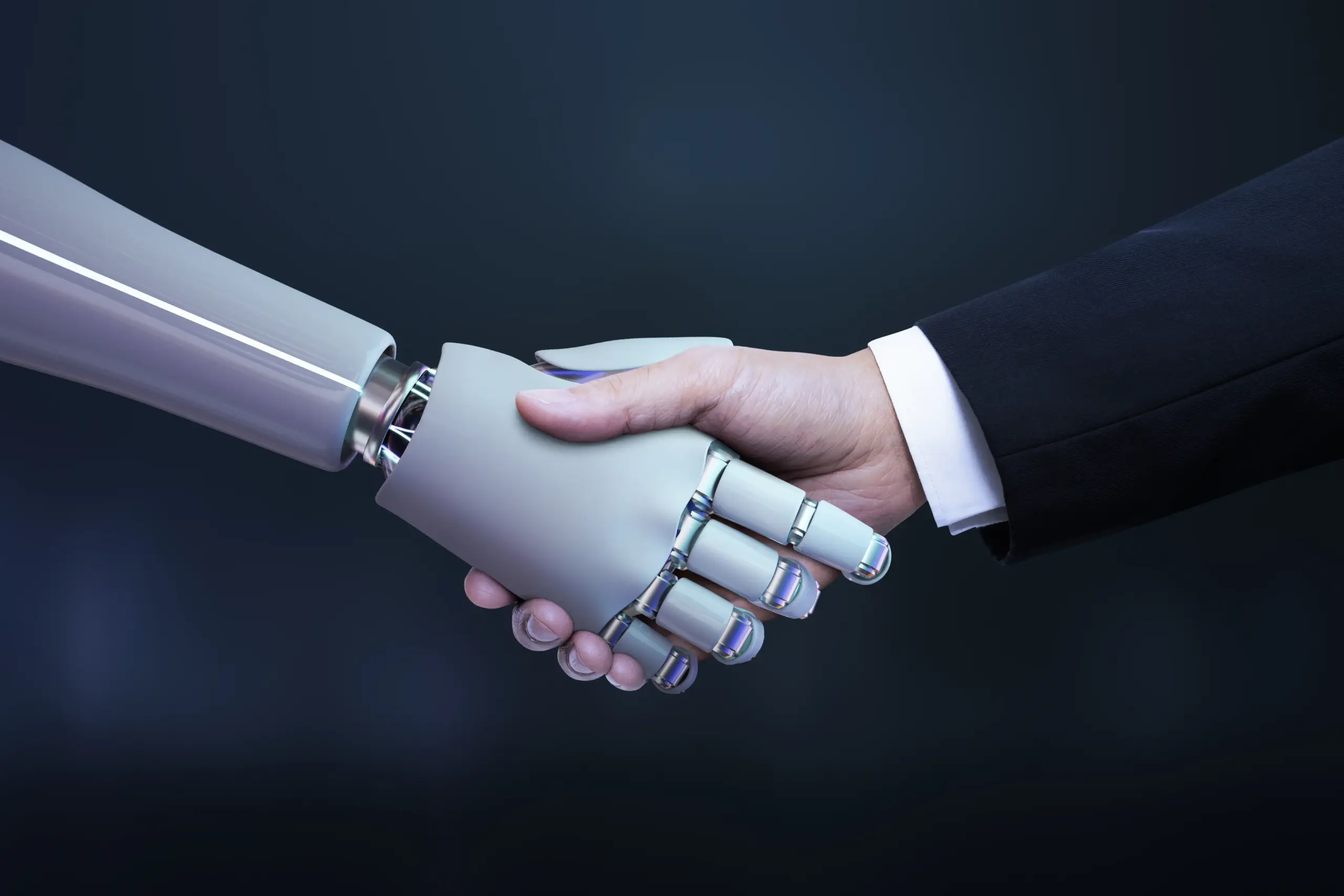Agentic AI Definition: Understanding the Concept
Agentic AI refers to artificial intelligence systems that possess agency—the ability to act independently and make decisions to accomplish specific objectives. The term “agentic” comes from the concept of agency, which denotes the capacity to take action autonomously. These systems go beyond traditional AI by demonstrating proactive behavior rather than simply reacting to inputs.
Agentic AI is an autonomous AI system that can act independently to achieve pre-determined goals. Unlike traditional AI that requires prompting and step-by-step guidance, agentic AI is proactive and can perform complex tasks without constant human oversight.
At its core, agentic AI combines multiple forms of artificial intelligence—including large language models, reinforcement learning, and specialized algorithms—to create systems capable of planning, acting, learning, and improving over time. These AI agents can break down complex goals into manageable subtasks, make contextual decisions, and adapt to changing conditions.
Key Characteristics of Agentic AI Systems
What distinguishes agentic AI from other artificial intelligence systems? Several fundamental characteristics define these advanced systems:
Autonomy
Agentic AI can operate independently without constant human intervention. These systems maintain long-term goals, manage multi-step problem-solving tasks, and track progress over time. This autonomy allows them to complete complex workflows with minimal supervision.
Proactivity
Unlike reactive systems that only respond when triggered, agentic systems anticipate needs and take initiative. They can identify emerging patterns and address potential issues before they escalate, driven by environmental awareness and goal-oriented behavior.
Adaptability
Agentic AI learns from experiences, incorporates feedback, and adjusts its behavior accordingly. This adaptability enables these systems to improve continuously and handle unfamiliar situations by applying learned knowledge to new contexts.
Goal-Driven
These systems operate with specific objectives in mind, breaking down complex goals into manageable subtasks. They can prioritize actions based on their contribution to overall goals and adjust strategies when circumstances change.
Collaborative
Agentic AI can work effectively with humans and other AI systems. They understand shared objectives, interpret human intent, and coordinate actions accordingly, making them valuable in settings that require human-machine teamwork.
Specialized
Many agentic systems build upon multiple hyperspecialized agents, each focused on a narrow area of expertise. These specialized AI agents coordinate with each other, sharing insights and handling different aspects of complex tasks.
How Agentic AI Works: The Core Mechanisms
Agentic AI operates through a structured process that enables autonomous decision-making and action. Understanding these mechanisms helps clarify how these systems achieve their remarkable capabilities:
Perception
Agentic AI begins by collecting data from its environment through various inputs—sensors, APIs, databases, or user interactions. This perception stage ensures the system has up-to-date information to analyze and act upon. Advanced systems can process structured, semi-structured, and unstructured data from multiple sources.
Reasoning
Once data is collected, the AI processes it to extract meaningful insights. Using natural language processing, computer vision, or other AI capabilities, it interprets information, detects patterns, and understands context. Large language models (LLMs) power this reasoning stage, helping the system develop action plans and adapt to new information.
Decision-Making
The AI evaluates multiple possible actions and chooses the optimal one based on factors such as efficiency, accuracy, and predicted outcomes. It might use probabilistic models, utility functions, or machine learning-based reasoning to determine the best course of action that aligns with its goals.
Execution & Learning
After selecting an action, the AI executes it by interacting with external systems or providing responses to users. Following execution, the system evaluates outcomes and gathers feedback to improve future decisions. Through reinforcement learning or self-supervised learning, agentic AI continuously refines its strategies.
Key Insight: What makes agentic AI powerful is the integration of these processes into a cohesive system. While traditional AI might excel at individual components like perception or reasoning, agentic systems combine all these capabilities with the crucial addition of autonomous goal-setting and execution.
Agentic AI vs. Traditional AI & Generative AI
To fully understand the agentic AI definition, it’s helpful to compare it with other forms of artificial intelligence:
| Aspect | Traditional AI | Generative AI | Agentic AI |
| Primary Function | Follows predefined rules and patterns | Creates content based on learned patterns | Takes autonomous action to achieve goals |
| Decision Making | Limited to programmed decision trees | Makes creative decisions within domain | Makes contextual decisions across domains |
| Autonomy | Minimal; requires explicit instructions | Partial; generates within parameters | High; can operate independently |
| Learning | Static or limited learning | Learns patterns to create content | Learns from outcomes to improve actions |
| Human Interaction | Requires constant guidance | Requires prompts and direction | Can initiate and complete tasks |
While generative AI focuses on creating content—text, images, code—based on learned patterns, agentic AI extends this capability by applying these outputs toward specific goals. For example, a generative AI model might produce text or code, but an agentic AI system can use that generated content to complete complex tasks autonomously by calling external tools and making decisions.
Real-World Applications of Agentic AI
Agentic AI is transforming numerous industries through its ability to handle complex tasks autonomously. Here are some notable applications:
Healthcare
In healthcare, agentic AI systems can monitor patient data, adjust treatment recommendations based on new test results, and provide real-time feedback to clinicians. They’re also accelerating drug discovery by analyzing massive datasets, identifying potential drug targets, and predicting efficacy—dramatically compressing development cycles and reducing costs.
Finance
Financial institutions use agentic AI to analyze market trends, assess investment opportunities, and create personalized financial plans. AI agents can analyze vast amounts of data to surface potential risks and vulnerabilities, helping institutions proactively manage exposure and ensure regulatory compliance.
Supply Chain
Agentic AI optimizes logistics and supply chain management by analyzing real-time data, predicting bottlenecks, and adjusting inventory levels based on demand fluctuations. If disruptions occur, AI agents can automatically reroute shipments and adjust schedules to minimize impact.
Customer Service
Advanced customer service systems use agentic AI to handle complex queries, anticipate customer needs, and resolve issues with context-awareness. These systems can understand customer intent, predict needs, and offer tailored solutions while operating 24/7 to ensure consistent support.
Cybersecurity
In cybersecurity, agents continuously monitor network traffic, system logs, and user behavior for anomalies that might indicate vulnerabilities. They can autonomously respond to threats, isolate affected systems, and implement countermeasures without human intervention.
Software Development
Agentic AI is revolutionizing software testing and development. Testing agents can understand requirements, generate test cases, automate manual tests, and provide actionable insights into results. They can also assist in code transformation, modernization, and migration tasks.
Benefits of Agentic AI Systems
The adoption of agentic AI offers numerous advantages for organizations and individuals:
- Increased Efficiency and Productivity – Agentic AI can handle complex, decision-intensive tasks that were previously beyond the reach of automation, freeing human workers to focus on strategic initiatives and creative problem-solving.
- Enhanced Decision-Making – By analyzing vast amounts of data and identifying patterns that humans might miss, agentic systems can provide insights that lead to better, more informed decisions.
- Continuous Operation – Unlike human workers, agentic AI systems can operate 24/7 without fatigue, ensuring consistent performance and availability.
- Adaptability to Change – These systems can quickly adjust to new circumstances, learning from experiences and improving their performance over time without requiring reprogramming.
- Personalized Experiences – In customer-facing applications, agentic AI can deliver highly personalized interactions by understanding individual preferences and adapting accordingly.
- Human Augmentation – Rather than replacing humans, agentic AI can enhance human capabilities, serving as collaborative partners that handle routine or complex analytical tasks.
Challenges and Considerations
Despite its potential, agentic AI presents several challenges that must be addressed:
Opportunities
- Unprecedented automation of complex tasks
- Enhanced decision-making capabilities
- Continuous improvement through learning
- Reduced need for human intervention
- Ability to handle unpredictable scenarios
Challenges
- Ensuring appropriate levels of autonomy and oversight
- Addressing reliability and “hallucination” issues
- Managing security and privacy concerns
- Establishing governance frameworks
- Balancing automation with human judgment
The autonomous nature of agentic AI raises important questions about control and accountability. As these systems become more capable of independent action, ensuring they operate within appropriate boundaries becomes crucial. Organizations must implement robust governance frameworks, including human-in-the-loop mechanisms for critical decisions and continuous monitoring of AI actions.
Best Practice: Implement a “human-in-the-loop” approach for critical decisions, where agentic AI systems make recommendations but final approval remains with human operators. This ensures accountability while still leveraging AI capabilities.
Future Implications of Agentic AI
As agentic AI continues to evolve, its impact on society and business will likely expand in several directions:
Workforce Transformation
Agentic AI will reshape job roles, with routine cognitive tasks increasingly handled by AI systems. This shift will create new opportunities focused on AI oversight, creative problem-solving, and human-AI collaboration. Workers will need to develop skills in areas where humans complement AI capabilities.
Business Model Innovation
Organizations will develop new business models centered around agentic AI capabilities. This might include AI-as-a-service offerings, personalized products and services at scale, and entirely new categories of businesses built on autonomous AI agents.
Ethical and Regulatory Frameworks
The advancement of agentic AI will necessitate new ethical guidelines and regulatory frameworks. Questions about accountability, transparency, and the appropriate limits of AI autonomy will become increasingly important as these systems take on more significant roles.
The massive leaps forward in AI have created a seismic technology shift. The way that the most modern and successful companies will operate in five years—what their people do, what machines do, and the ways people, robots, and agents work together—will bear little resemblance to how they operate today.
Getting Started with Agentic AI
For organizations looking to explore agentic AI, consider these steps:
- Identify Potential Use Cases – Begin by identifying processes that could benefit from autonomous decision-making and action. Look for tasks that are complex but well-defined, with clear goals and measurable outcomes.
- Start with Orchestration – Implement a robust orchestration framework that coordinates how and when AI agents act across systems, tasks, and human handoffs. This ensures accountability and reduces risk.
- Establish Governance – Develop clear governance frameworks that define roles, responsibilities, and ethical guidelines for AI use. Create mechanisms for monitoring, auditing, and intervention.
- Implement Human-in-the-Loop – Design systems where humans validate and confirm key decisions, ensuring critical choices align with human judgment and business context.
- Test and Validate – Conduct rigorous testing under various scenarios to identify and address potential flaws before deploying in real-world environments.
Conclusion: The Future of Agentic AI
Agentic AI represents a significant evolution in artificial intelligence—moving from systems that simply respond to commands to those that can act independently to achieve goals. By combining autonomy, goal-driven behavior, and adaptability, these systems are expanding the boundaries of what’s possible with AI technology.
As agentic AI continues to develop, it will transform how organizations operate, how people work, and how complex problems are solved. The ability of these systems to understand context, make decisions, and take action autonomously opens up new possibilities across industries—from healthcare and finance to supply chain management and customer service.
While challenges remain, particularly around governance, reliability, and appropriate levels of autonomy, the potential benefits of agentic AI are substantial. Organizations that thoughtfully implement these technologies, with appropriate safeguards and human oversight, will be well-positioned to leverage their capabilities while mitigating risks.

